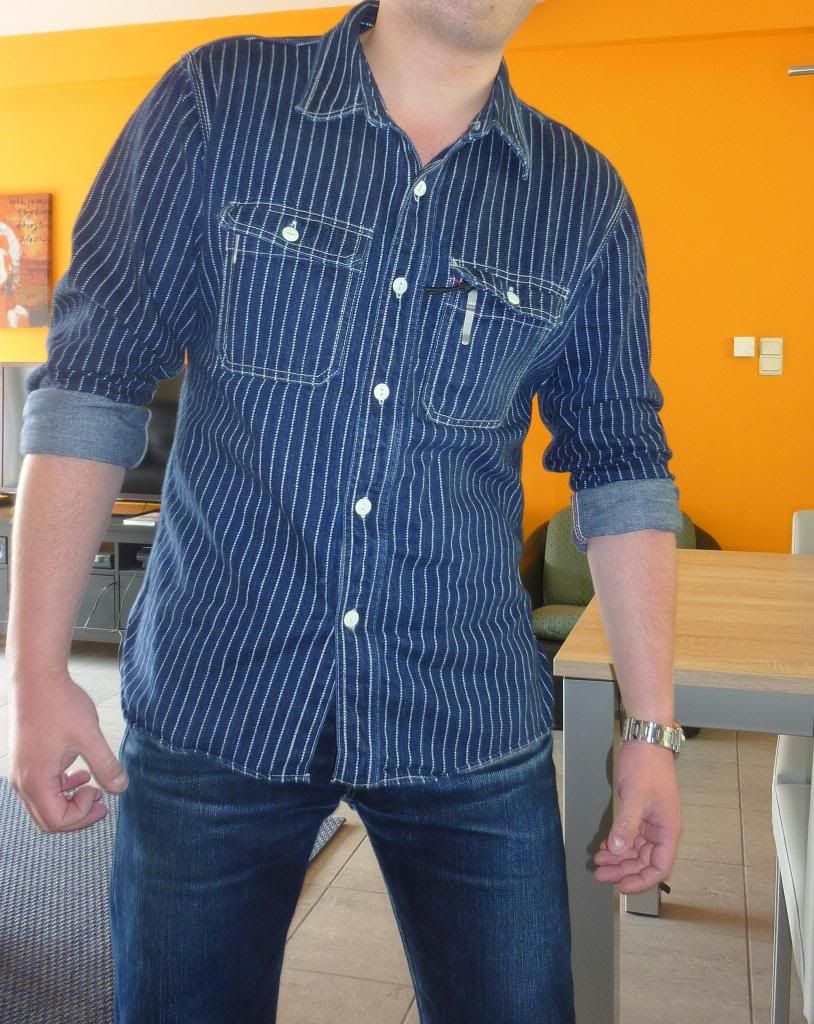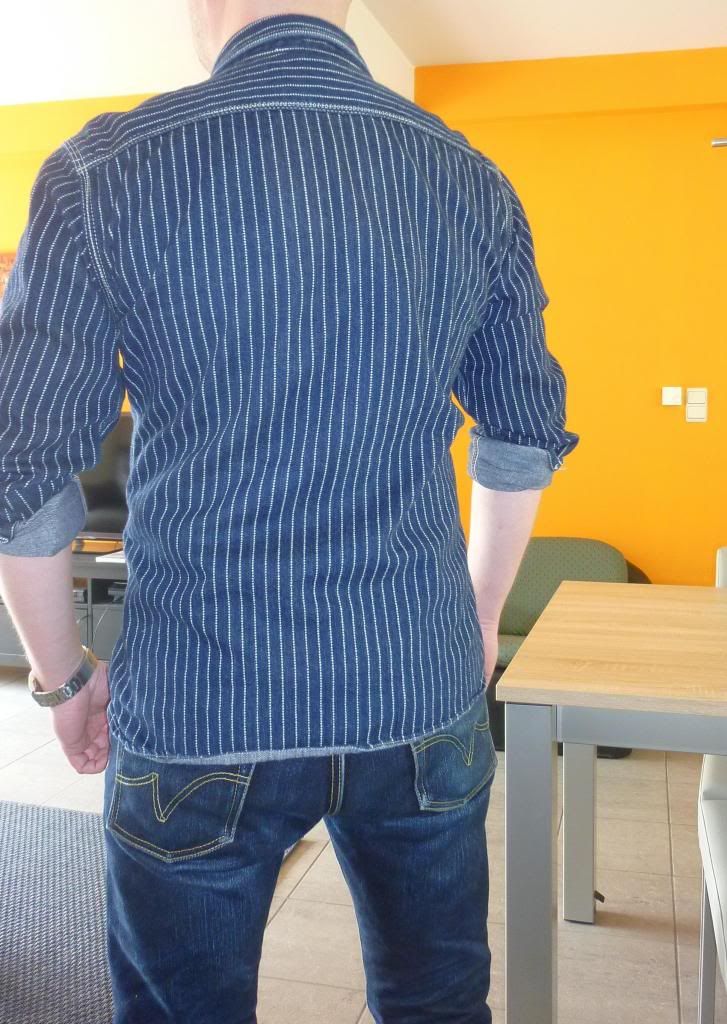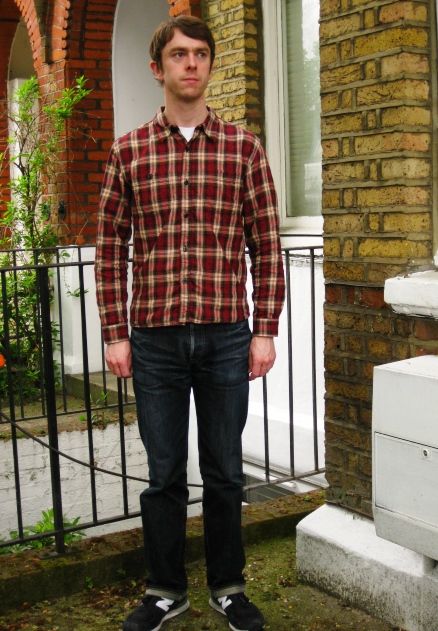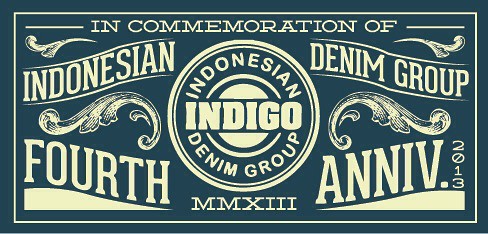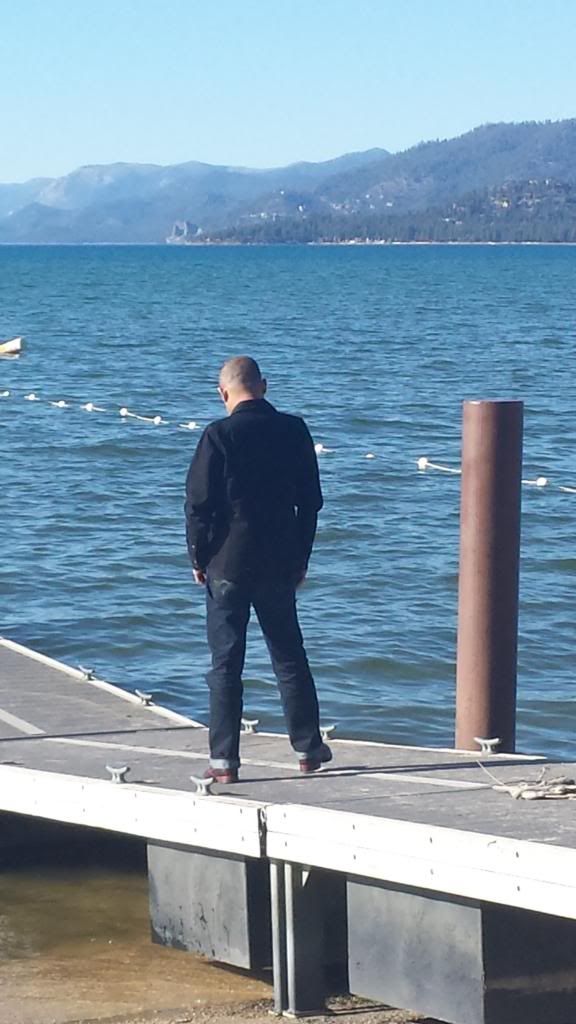The Flat Head
-
You should pull it out of the closet more often.
-
-
Very nice!
-
thanks a ton kyle:
@Kyle@TFH:
Okay guys, this is the moment you’ve been waiting for. I had the privilege of visiting Kojima, Okayama prefecture, where I saw firsthand how Flat Head creates their jeans. As far as I can tell, none of this has ever been documented in English before, and there are virtually no other companies that make jeans this way.
Even among the high-class Japanese brands, most jeans are cut and sewn in a single factory. Flat Head, however, is unique in that they do not make their jeans in a central factory; rather, they have about half a dozen different locations in the Kojima area, each dedicated to a different stage of producing jeans.
Because this is somewhat sensitive information, I can’t give out too many names or details concerning exactly how Flat Head does this, nor the names of the company or their employees. However, you can get a never-before-seen look into the unique ways we make our jeans. This is a lot of information, so I’ll be taking several posts to write about all of it.
Part One: The City, The Office

Kojima (now technically a part of Kurashiki) is located in western Japan. The area is best known for the massive Great Seto Bridge connecting Japan’s main island Honshu to Shikoku (which is the only place in Japan where indigo is produced.) The region is a center for heavy industry as well as an important international port. But more importantly for us, Kojima is also the heart of Japan's denim production. Many companies are headquartered here, ranging from beloved enthusiast brands to mainstream jeans that can be found in any store in Japan.

Kojima has capitalized on its denim heritage, with a denim museum (where you can make your own denim items and accessories), a tour bus connecting popular destinations, and a Jeans Street, where many clothing stores and denim-related shops are located.
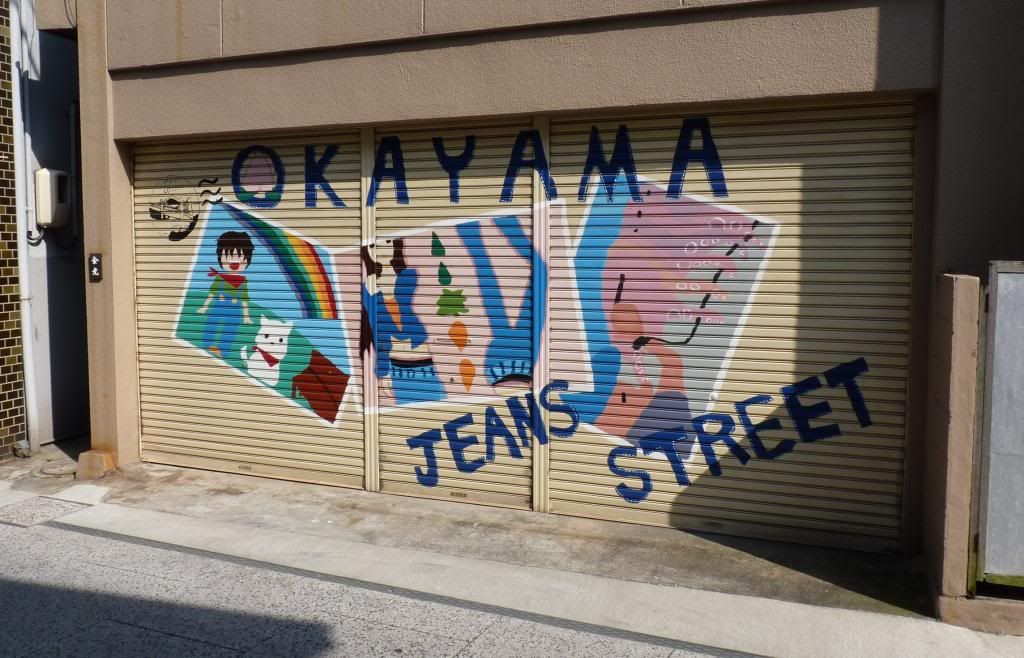
However, Flat Head’s activity in Kojima is far from the typical tourist destinations. Our journey into the heart of Flat Head’s denim production takes us far from the city’s factories and mills and into small, winding neighborhoods where you would never expect to see jeans being produced.
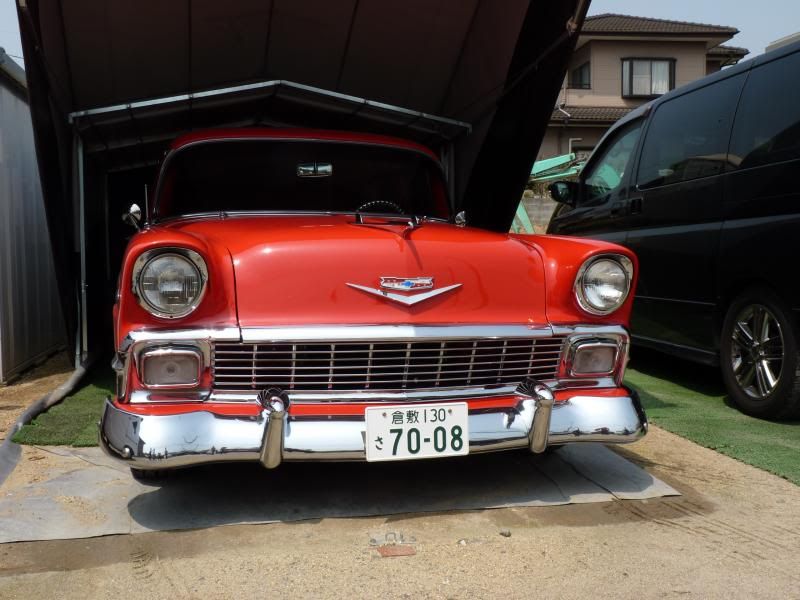

First off, we visited the main office of the sewing company. They’ve been in business for over twenty-five years; a love for denim runs deep in their veins and they’ve been doing this for longer than almost all of our favorite brands have even existed. Their workers have many years of experience that predates the manufacture of jeans, but they’re also training the next generation of skilled workers to inherit these techniques.
They make jeans for at least one other Superfuture-familiar brand, and have made for others in the past, but it’s clear that their closest relationship is with Flat Head. The CEO (and our tour guide) was dressed from head to toe in Flat Head apparel.
I asked him many questions about the company – their history, the other brands they’d worked with, and so on. He said that Flat Head jeans are by far the most difficult for them to make because of the unique processes and time-consuming methods we use which differ from that of other brands.The office is where the company tests out machinery and techniques, cuts patterns, and works with new fabrics. This is also where samples (such as my 4002 prototype jeans) are made. It has a variety of vintage sewing machines and tools on hand.
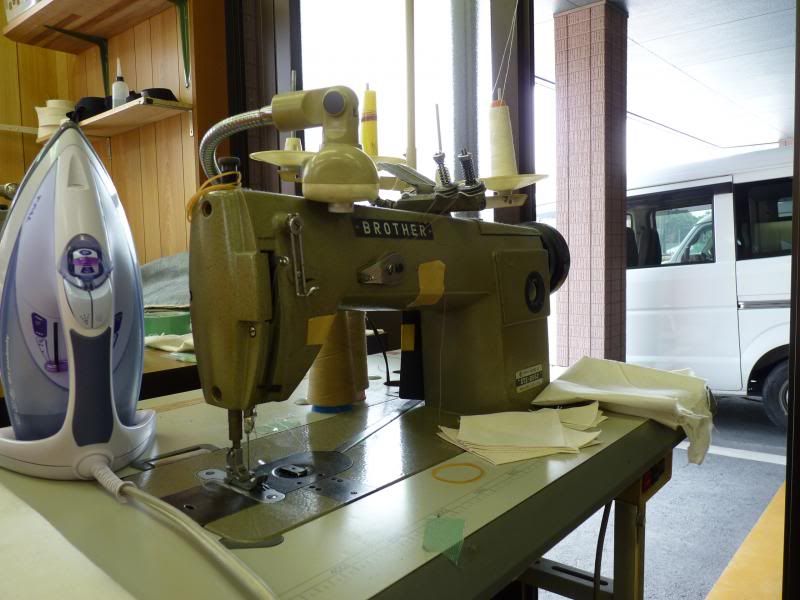
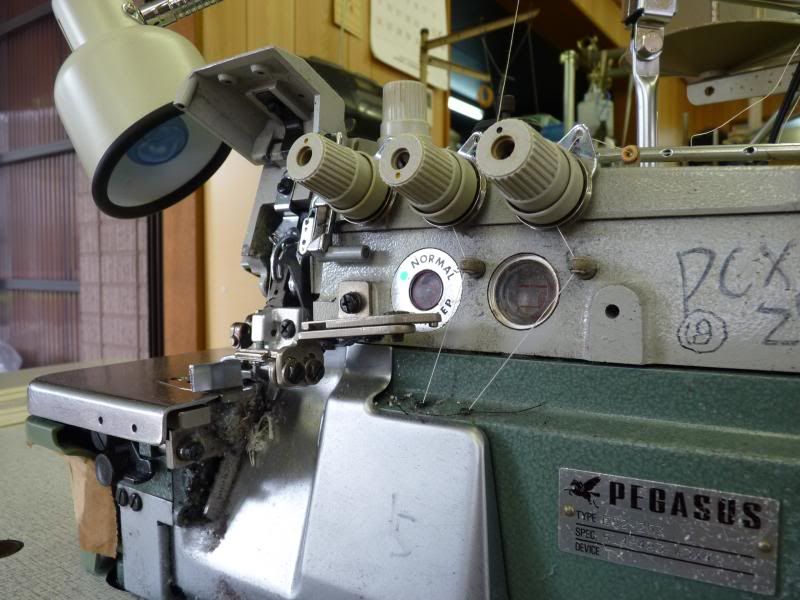
Next time we’ll take a look at the first stop in the creation of Flat Head’s jeans!
-
Glad you enjoyed it, I'm posting the next part as soon as SuFu's back online!
-
F310
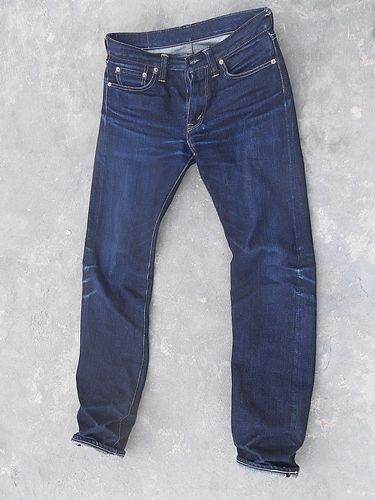


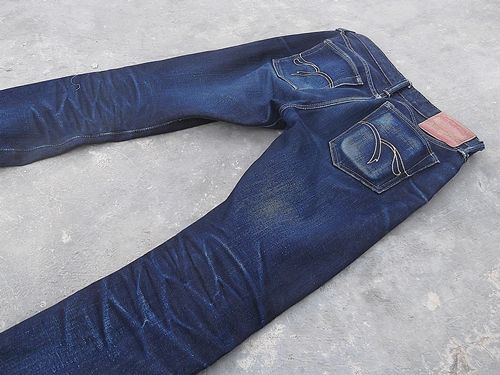
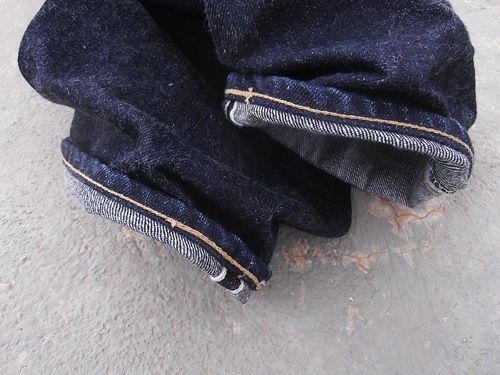
-
^thanks for part II Kyle

@Kyle@TFH:
Part Two: The Cutting House

Our first stop on the Flat Head tour took us to an ordinary neighborhood of traditional Japanese-style houses. If you didn’t know exactly where to look, you would never have known that some of Japan’s best jeans are made here. There are only about five or so locations where Flat Head’s jeans are made like this, scattered throughout Kojima.
According to the sewing company, this is a traditional Kojima way of manufacture, and it’s not hard to see why. Compared to doing everything in a single factory, it’s slower and less efficient, particularly the extra step of transporting the jeans (in various states of completion) from one location to the next. This house-factory method of manufacture extends at least as far back as World War II (when civilian areas were bombed for supposedly concealing production) and is probably much older than that, even.
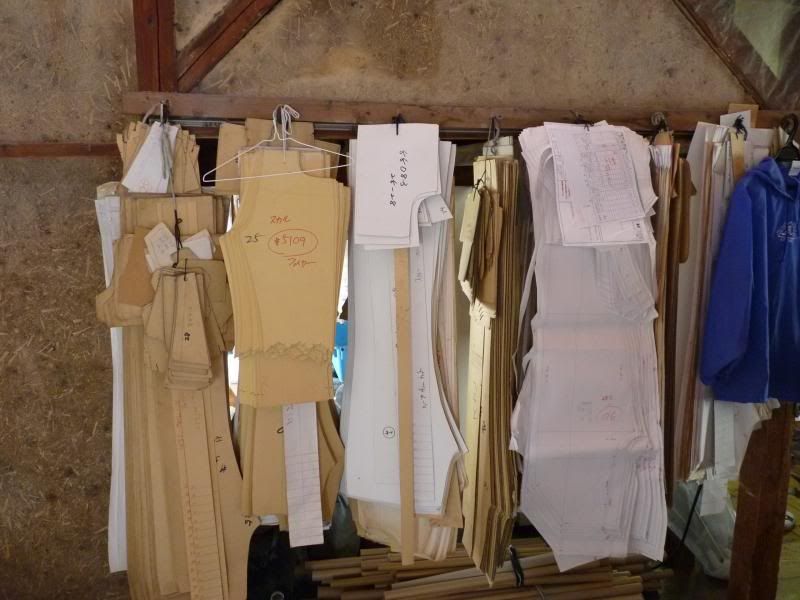
The history of this cutting house goes back much farther than the sewing company or Flat Head. According to the elderly couple who lives and works here, the building is over a hundred years old. You’d be unlikely to find anything like this from other manufacturers, and getting to see the facilities and processes used inspired a deep respect for a side of Japan that has largely vanished in the twenty-first century.
The cutting house, as the name suggests, is where the jeans are cut. The man cutting the jeans was able to tell me exactly how many layers of denim were in each stack – twenty-two. As he said, this is the optimum amount for cutting with their tools. Too many layers results in a lack of uniformity; too few, and it becomes difficult to properly control the tools.
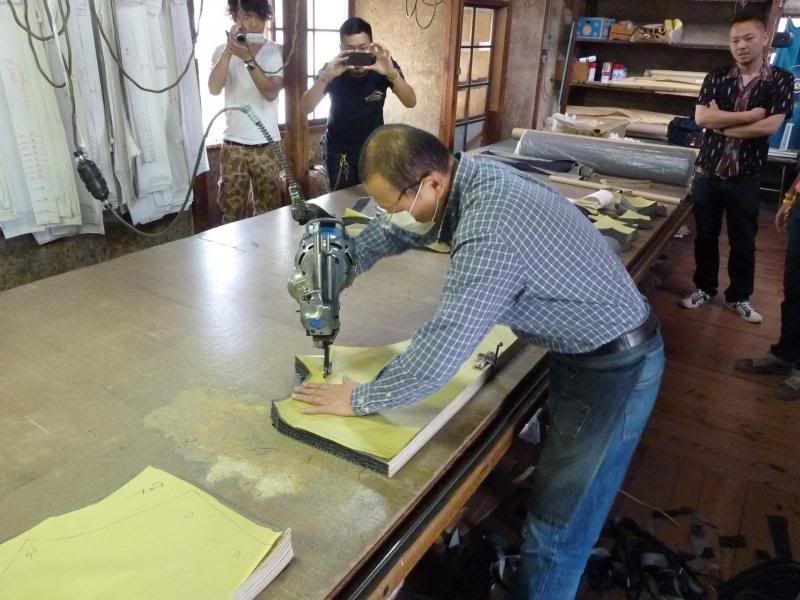
As you can see, this is done entirely by hand; there’s no automation involved. There’s always a highly-skilled hand behind each of the tools used in making our jeans.

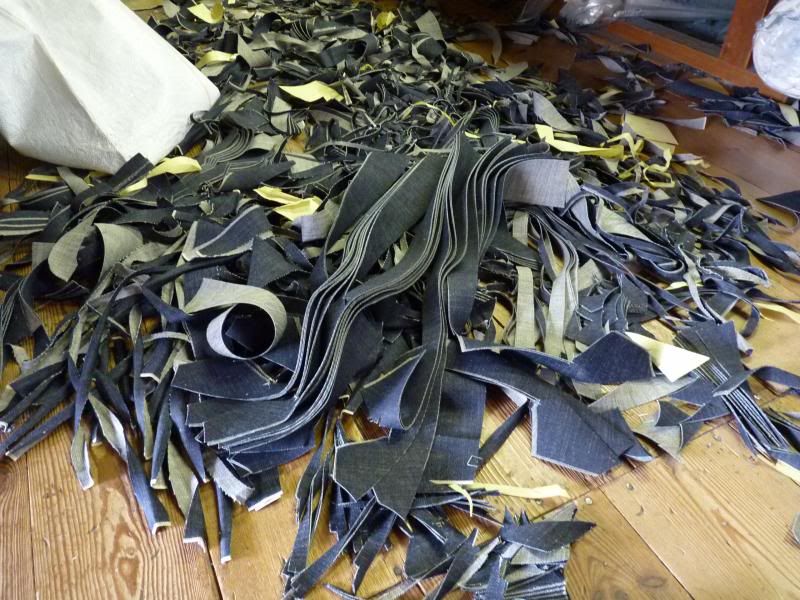
I also got the opportunity to cut some denim myself! I only practiced on waste scraps, but I could definitely tell that this was way harder than it looked. While most jeans are cut by automated machines, Flat Head does it all by hand. It actually reminded more of my father’s woodworking than anything I would have associated with making jeans.
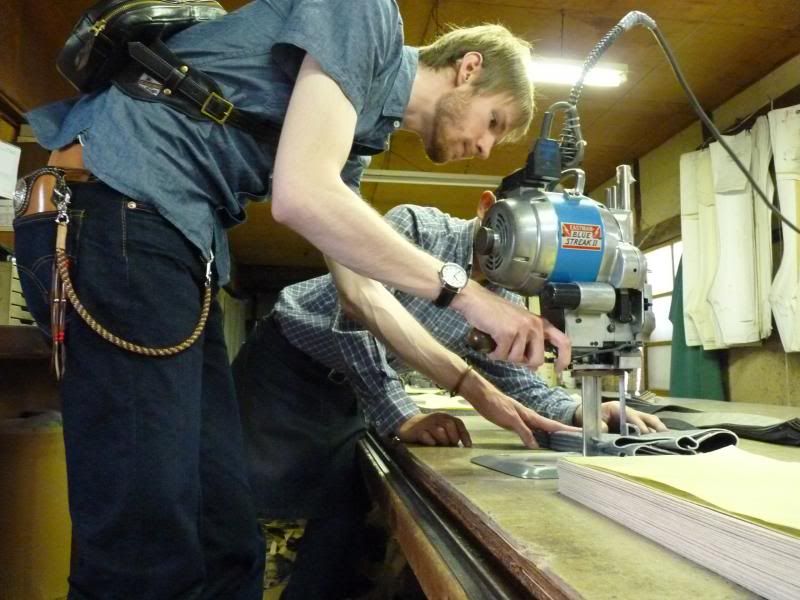
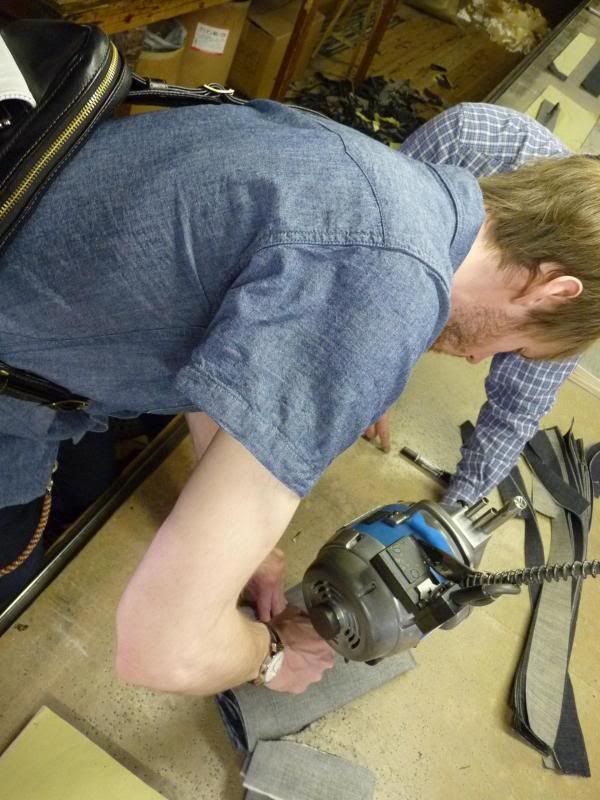
It was quite an experience getting to meet the very same people who most likely cut the jeans I’m wearing today. If you’re wondering why I’m not talking about the dyeing and weaving process, that’s because it’s not done in Kojima. Flat Head’s dyeing is a very carefully-guarded secret; besides our president Mr. Kobayashi, only two or three people in the company have ever seen our proprietary dyeing technique in person. Additionally, our denim is not woven by one of the well-known denim mills, such as Kaihara or Kuroki; I had never heard of it before, and I don't know of any other brands that get their denim from here. All that I can say is that both our proprietary dyeing and weaving processes are not found in denim by any other brands.

Next time we’ll see where the needle hits the selvage and check out the first of Flat Head’s sewing houses!
-
not a problem wade

@Kyle@TFH:
Part Three: The First Sewing House
Our next stop takes us to the first sewing house. We were greeted by a large, barking dog; apparently, the sewer’s daughter is involved in breeding dogs. I kept my distance.
Here, a single individual runs the entire sewing operation. She helms an old single-needle Mitsubishi sewing machine, and her task is to sew the back pockets, from start to finish.
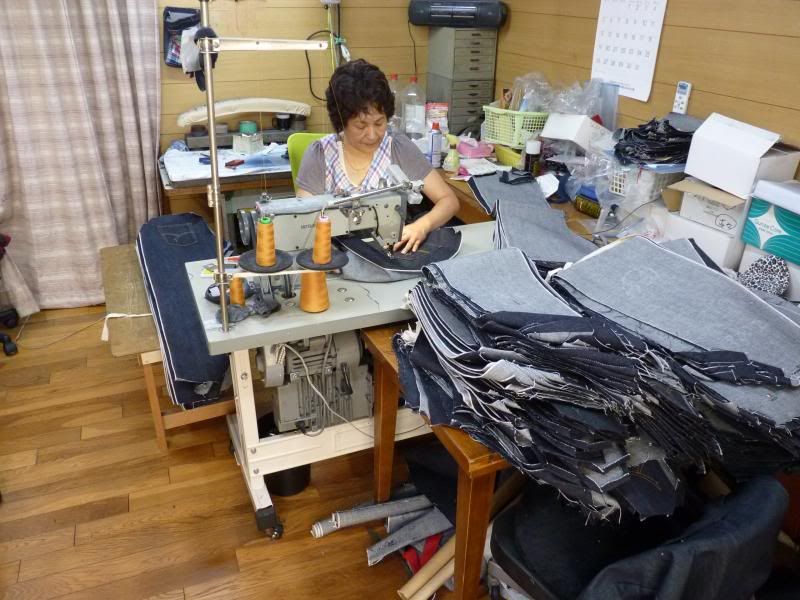
First, she sews the pocket shape from a blank piece of denim, folding the edges and riveting it to the jeans. This is actually the easy part.
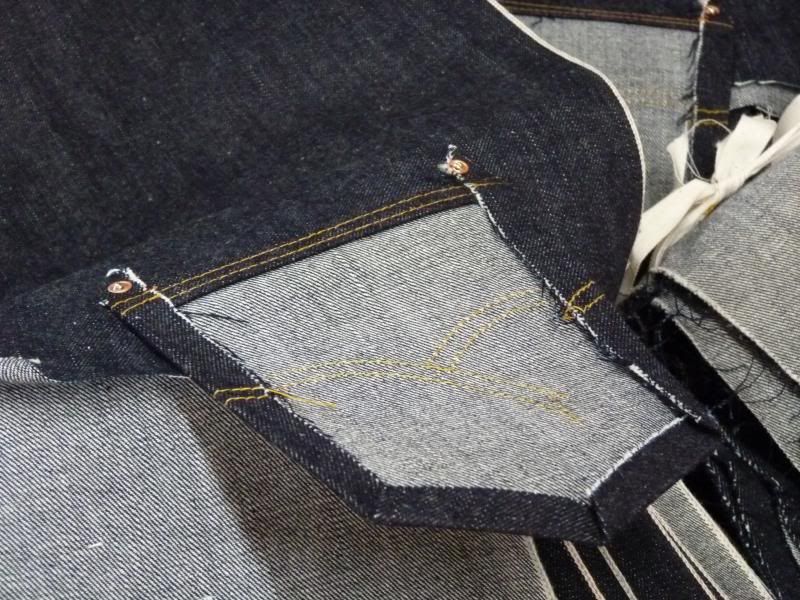
She sews the arcuates, too; though she uses a chalk pattern for tracing, the actual arcuate stitch is sewn by hand. Compare this to many brands, which stitch their arcuates using an automatic machine that creates the entire design at once.
After the arcs, the pocket is riveted. Once a sufficiently large stack of half-attached pockets has accumulated, she does the most difficult part of the process: stitching the pockets to the leg. This looks deceptively easy, but in fact it takes a high level of skill to make the narrow stitch of the back pockets without contacting the pocket rivets.
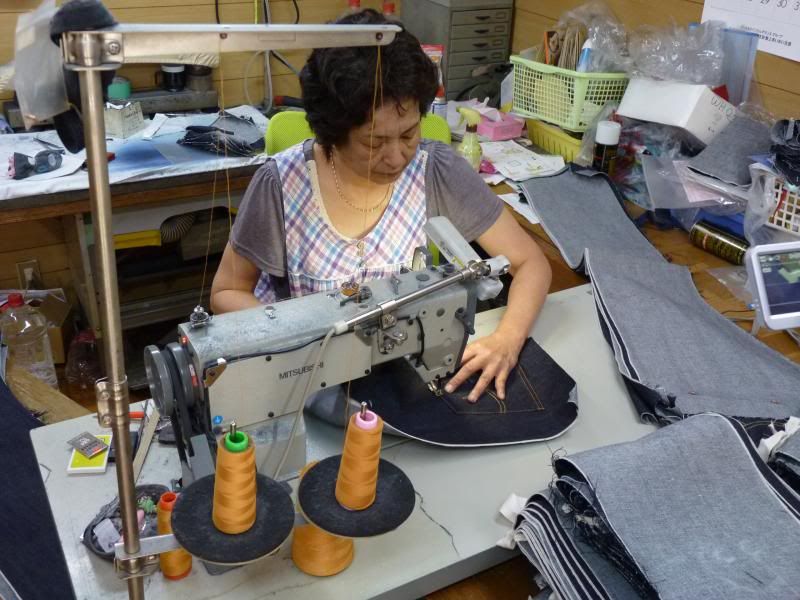
Once we finished watching, I told her that while she might have a thankless job if she worked in some factory, denim enthusiasts are the kind of people who consciously appreciate the kind of detailed effort that goes into these steps of the sewing process. She seemed quite grateful and flattered that we thought so highly of her work.
Next time we’ll venture to the main cutting sewing house, where most of the sewing takes place!
-
@Kyle@TFH:
Part Four: The Second Sewing House
Our next stop was a small house at the top of a steep hill; this couple raises fish in addition to crafting denim, but perhaps more of interest to us, they had a small van completely packed to the brim with Flat Head denim, waiting to be sewn together.
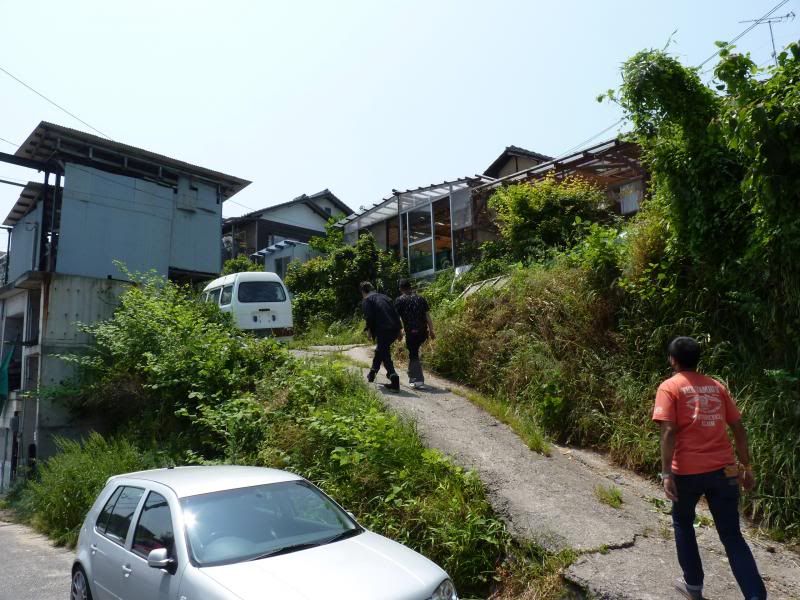
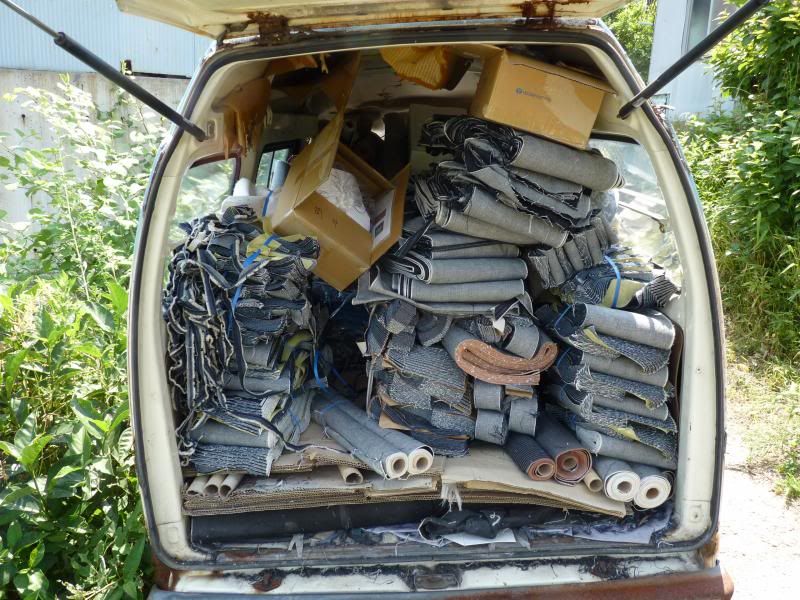
This is arguably the most important stop of our tour; it’s certainly where the most sewing takes place. The couple who run the second sewing house have a large collection of vintage sewing machines by Mitsubishi, Brother, and of course Union Special.
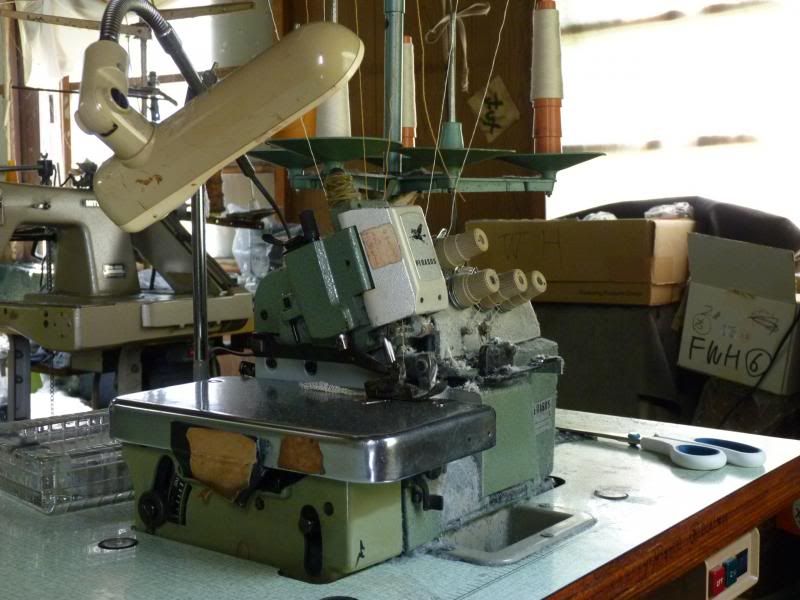
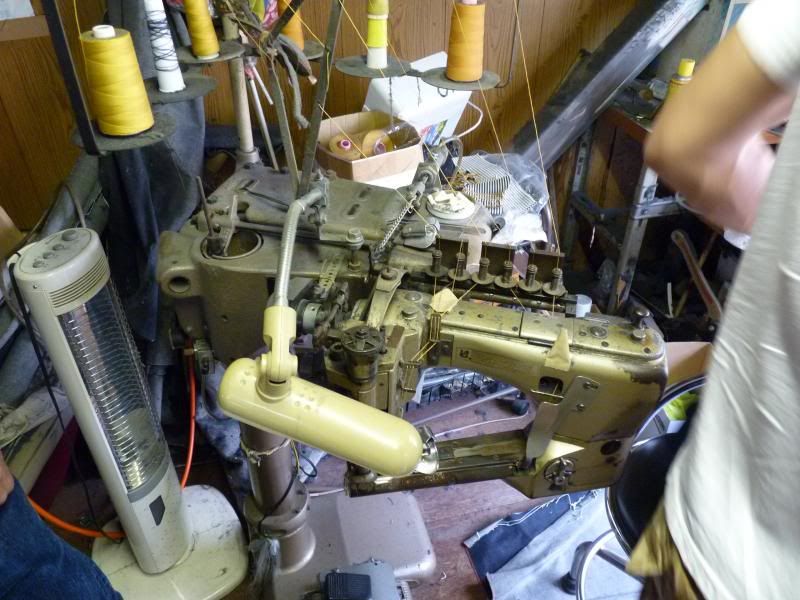
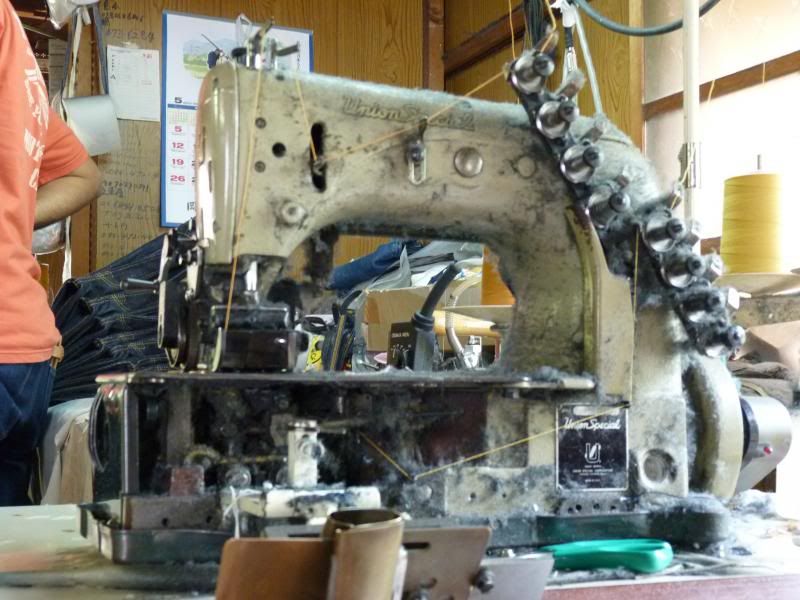
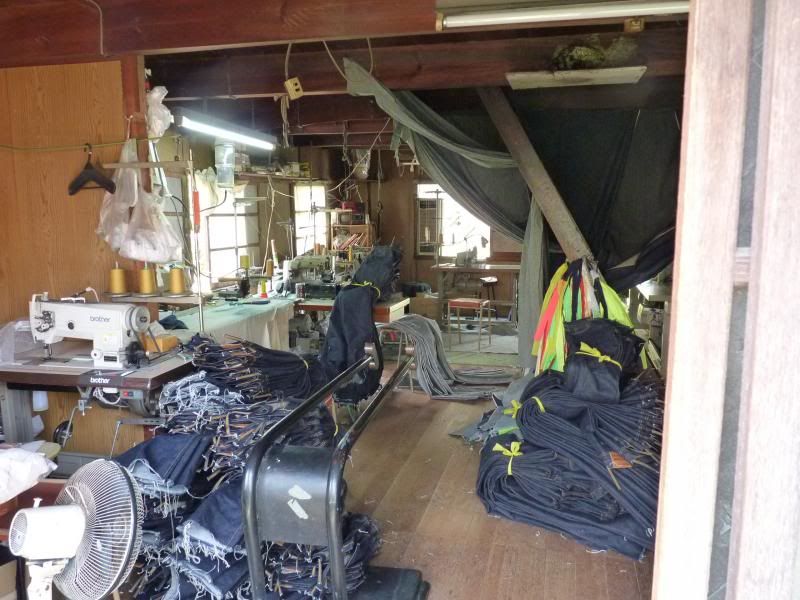
When we dropped in, they were hard at work on special 20 oz. collaboration jeans. These are apparently a real headache to sew with all-cotton thread on vintage machines, and these are the very last 20 oz. jeans that Flat Head is going to make. The man is folding the waistband and chainstitching the bottom part, which is a slow process requiring many adjustments during sewing.
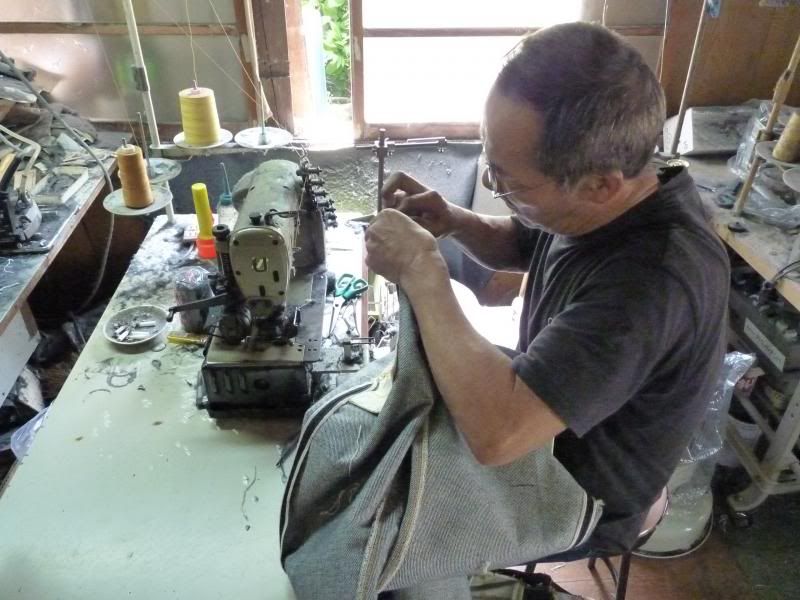
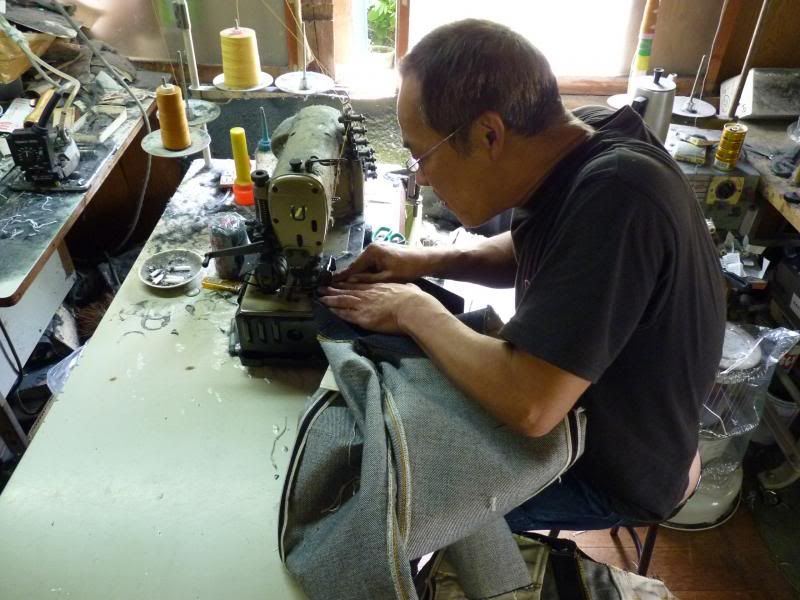

The woman is finishing up the waistband with a single-stitch machine. This is also much slower than you’d expect, because the belt loops are sewn into the waistband as well. The conventional method is to sew the entire waistband and then attach the belt loops, but instead Flat Head jeans have the belt loops sewn in at this stage for additional strength. She also sews the leather patch with the same single stitch; it’s not attached separately.

As you can probably see, this is not the fastest way to make jeans. But because all of Flat Head’s jeans are sewn here (and in one other house factory with the same machinery, which was too far away for us to visit at this time), it allows for a personal touch that’s absent from mass-produced jeans, and gives the workers greater control over processes involved. More importantly, it lets workers specialize in a few select areas of expertise, in a less distracting environment than a large factory.
Some people claim that the idea of a uniquely Japanese work ethic is hyperbole, but it makes sense once you see the careful sewing processes in person. Next time we’ll visit the last stop of the tour, where the jeans reach their final form!
-
I really dig the evo on the DnD's painted buttons. Though I look forward to all the paint being gone.

-
-
Nice. And nice kicks too

-
Maybe I was wrong. Those look great!
-
Wow Finn, perfect fit. Those tees look great!

